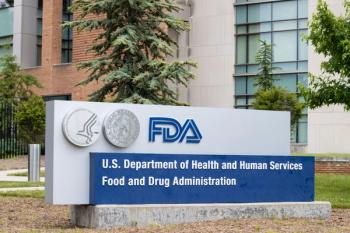
Febrile Neutropenia Following Chemotherapy Predicts Long-Term Risk of Infection
Adjusted incidence rate ratios showed that febrile neutropenia following chemotherapy carried an approximately 2-fold risk of long-term infection.
Febrile neutropenia during chemotherapy is associated with a long-term risk of infection, and mortality rates are significantly heightened for 6 months following infection, according to a study that brought light to the long-term outcomes of the condition.
Previous research has focused on the short-term effects of febrile neutropenia, such as treatment delays, dose reductions, and increased hospital mortality. However, due to compromised immune systems and increased susceptibility to infection as a result of febrile neutropenia, the researchers hypothesized that risk of infection would remain following completion of chemotherapy.
“Such information may be used to guide the intensity of long-term monitoring and prophylactic interventions for patients with a fragile phenotype and could potentially result in more appropriate management of these patients,” noted the researchers.
Testing their hypothesis, the authors followed 7190 patients from 180 days after initiation of firstline chemotherapy for either solid tumors or diffuse large B-cell lymphoma between January 2010 and September 2015. Patients were followed until first infection, a new treatment with chemotherapy, death, or end of follow-up. The researchers also examined whether the timing of febrile neutropenia in relation to initiation of chemotherapy was a predictor of long-term risk of infections.
Prior to baseline—the 180 days following initiation of chemotherapy—736 patients experienced at least 1 episode of febrile neutropenia, of which 617 experienced 1 episode and 119 experienced more than 1. During the study period, 1370 patients had at least 1 infectious event. Incident rates were 15.3, 24.3, and 26.7 per 100 person-years for patients with no, 1, and more than 1 febrile neutropenia episode before the study period, respectively.
Adjusted incidence rate ratios showed that febrile neutropenia following chemotherapy carried an approximately 2-fold risk of long-term infection, with an incidence rate ratio of 1.86 among those with 1 febrile neutropenia episode and an incidence rate ratio of 2.19 among those with more than 1 episode.
Incident rates varied by cancer type, ranging from 3.35 per 100 person years for breast cancer to 48.8 per 100 person years for prostate cancer.
“However, the relative risk of infection for patients with vs without febrile neutropenia before baseline showed the same tendency across the different types of cancers, with a substantially increased risk among patients with prior febrile neutropenia,” noted the researchers.
Risk of death increased after an infectious event, with an adjusted mortality rate ratio of 7.52 for the first month, 4.24 for 1 to 3 months after, 2.33 for 3 to 6 months after, and 1.09 for more than 6 months after infection. The increased risk of death was consistent among patients with and without a prior episode of febrile neutropenia.
The researchers also observed no significant difference in risk of infection according to timing of the episode of febrile neutropenia.
Reference:
Nordvig J, Aagaard T, Daugaard, et al. Febrile neutropenia and long-term risk of infection among patients treated with chemotherapy for malignant diseases [publihsed online October 25, 2018]. Open Forum Infect Dis. doi:10.1093/ofid/ofy255.
Newsletter
Stay ahead of policy, cost, and value—subscribe to AJMC for expert insights at the intersection of clinical care and health economics.








































